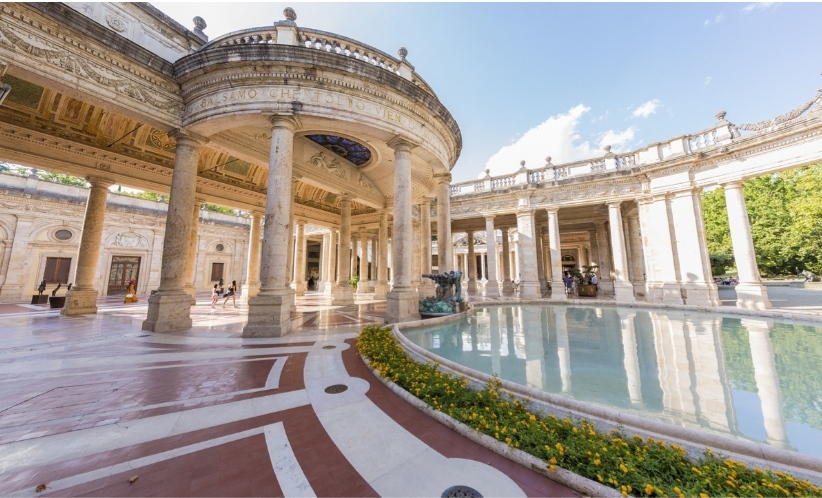Italian spa town Montecatini Terme basking in its UNESCO honor while looking to future
Long road to recognition

Italy’s spa town Montecatini Terme
Italy’s spa town Montecatini Terme had worked nearly nonstop for seven years in its campaign to achieve the status of a UNESCO World Heritage site.
When the town was one of 11 European spa towns UNESCO formally recognized, the city’s leaders said they were “honored and thrilled” but also not planning to rest on their laurels.
“This recognition is something we have been looking forward to and working toward for a long time,”said Luca Baroncini, mayor of Montecatini Terme.
“We believe we have some of the most beautiful spas in the world, but we are always looking to improve. We won’t stop now that we have been honored by UNESCO.”
Baroncini said he hoped the recognition from UNESCO – the United Nations Educational, Scientific and Cultural Organization – will attract new investment to the central Italian town of 20,000 residents. He believed the honor will also help draw new visitors from other parts of the world, even China and the rest of Asia.
Alessandro Michelotti, the top administrator for Terme di Montecatini – the entity that oversees the city’s spa complexes – agreed. He said that the honor will help broaden the appeal of the spa town.
“Before the pandemic, the spa [town] mostly drew visitors from other parts of Italy and Europe, especially Eastern Europe,” Michelotti said.
“Now we think we will start to see more visitors from farther away, including the Chinese tourist market that holds great potential.”
Michelotti said Terme di Montecatini was already looking for ways to include the UNESCO recognition in advertising and other promotional initiatives for the spas.
The recognition of Montecatini Terme was part of a broader recognition of 11 locations UNESCO designated as the “Great Spa Towns of Europe,” located in Austria, Belgium, Britain, Czechia, France and Germany in addition to Italy. The decision to recognize the towns was announced at the UNESCO World Heritage Committee’s 44th session in Fuzhou, China that concluded Sunday.
In its official statement on the topic, the committee said the spas were an “exceptional testimony to the European spa phenomenon” that ran from the 18th century to the 1930s.
Though that period includes the heyday of Montecatini Terme – a time when it attracted many of the great intellectuals and artists of the day, including famed composers such as Giacomo Puccini and Giuseppe Verde – the spa’s history dates back to medieval times when the town first earned a reputation for the medicinal powers of its spas.
Casting light on the rich and colorful history of the town’s spas has been something of a mission for Rafaela Verdicchio, the town official charged with shepherding Montecatini Terme’s candidacy through the various stages leading up to the UNESCO recognition.
Verdicchio said that the process started back in 2007, when Karlovy Vary, the spa town in the Czech Republic also recognized by UNESCO, started the application process. Montecatini Terme joined two years later, and in 2014, it formally applied to add its name to UNESCO’s “tentative list” for recognition. What followed was seven years of hard work to prove the town deserved the UNESCO honor.
Like Baroncini and Michelotti, Verdicchio said she was “honored and thrilled” when the official announcement was made. But she also made a point to keep things in perspective.
“This recognition is not an end for us, it’s a new starting point,” she noted, adding that in addition to maintaining and refurbishing the spas, she wanted to call attention to the city’s offerings for well-being and sport, including a golf course, tennis courts, and a hippodrome.
“The city has a great deal to offer any visitor,” she said.




